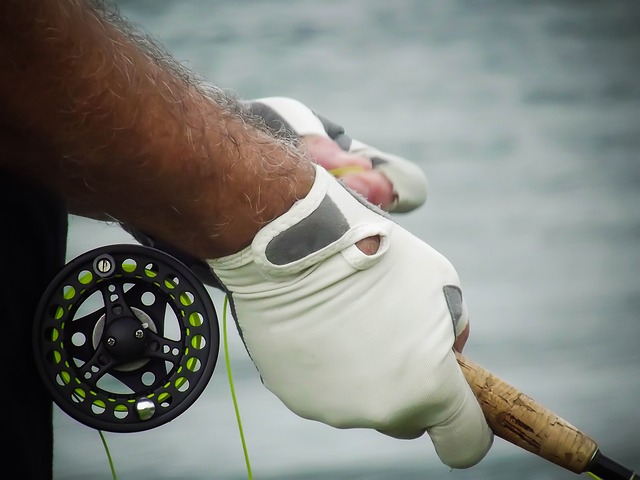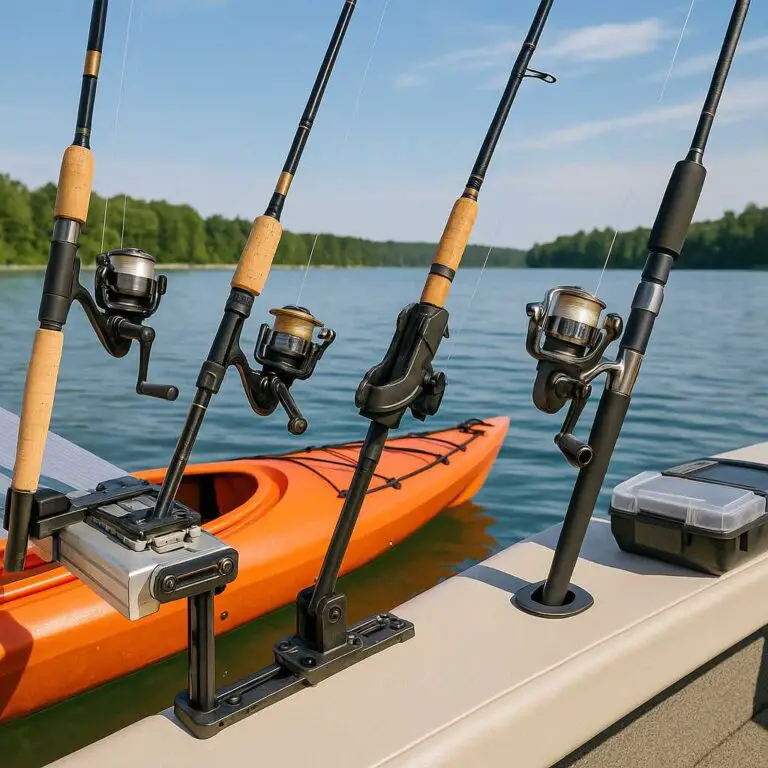If you’re like me, you know that a smooth and effortless cast makes the sport truly magical. But what happens when your fly line wears out and hinders your performance? Frustrating, right? Well, fear not! I’m here to tell you a little secret: homemade fly-line dressing. Not only is it a cost-effective solution, but it also allows you to customize your dressing to suit your needs. So, grab your favorite beverage, sit back, and dive into the world of homemade fly-line dressing together!
In this post, I’ll explore the ins and outs of fly line dressing, why it’s crucial for your casting success, and the many benefits of making your own. Don’t worry if you’re not a DIY expert – I’ll guide you through the entire process in a conversational and friendly tone. So, let’s roll up our sleeves and discover how to keep our fly lines slick, supple, and ready for action!
Understanding the Basics of Fly Line Dressing
Before I dive into the nitty-gritty of homemade fly-line dressing, let’s start with the basics. What exactly is fly line dressing, and why is it important for fly fishing enthusiasts like us?
Fly line dressing is a special lubricant or treatment applied to the surface of your fly line. It serves two primary purposes: enhancing casting performance and extending the lifespan of your line. Fly lines can become dirty and rough and lose their smoothness over time due to exposure to water, dirt, and UV rays. This can result in decreased casting distance, tangles, and even line damage.
By applying fly line dressing, you create a slick and protective layer on the surface of your line, reducing friction and improving its overall performance. It helps your line shoot through the guides smoothly, allows for effortless casting, and increases the floatability of floating lines. Plus, it helps prevent cracks and degradation, thereby extending the life of your expensive fly line.
Now, you might wonder, “Why bother making my fly-line dressing when commercial options are available?” Well, my friend, homemade fly-line dressing offers several advantages:
- It allows you to customize the formula to suit your preferences and fishing conditions. You can experiment with different ingredients to find the perfect blend that works for you.
- It’s cost-effective. You can save hard-earned cash by creating your dressing rather than purchasing pricey commercial alternatives.
- It’s a fun and rewarding DIY project that adds a personal touch to your fly fishing gear.
The Science Behind Homemade Fly Line Dressing
Now that I’ve established the importance of fly-line dressing let’s delve into the science behind it. Understanding the different components and how they contribute to the effectiveness of homemade fly-line dressing will help you create a formula tailored to your specific needs.
- Base Solution: The base solution forms the foundation of your homemade fly-line dressing. It typically consists of a mixture of water and a carrier agent. The carrier agent helps the dressing adhere to the line’s surface and aids in its even distribution. Common carrier agents include isopropyl alcohol, rubbing alcohol, or a mild dishwashing liquid diluted in water. The base solution ensures that the dressing spreads smoothly and dries evenly.
- Lubricants or Essential Oils: Lubricants or essential oils are the secret ingredients that give your fly line dressing its slickness and additional properties. They reduce friction, allowing your line to shoot through the guides effortlessly. Silicone-based lubricants are popular due to their excellent lubricating properties and water resistance. However, you can also explore natural alternatives like vegetables, olives, or even scented essential oils. Just be cautious with natural oils, as they may attract dirt or affect the buoyancy of floating lines.
- UV Protection: Exposure to sunlight can degrade and weaken your flyline over time. To combat this, consider adding UV protection ingredients to your homemade dressing. Some fly anglers incorporate sunscreen additives or UV inhibitors to shield the line from harmful rays. This extra layer of defense helps prolong the life of your fly line, especially if you frequently fish in sunny conditions.
- Drying Agents: You can include drying agents in your formula to ensure your homemade dressing dries properly and doesn’t leave behind a sticky residue. Common drying agents include talcum powder, cornstarch, or even unscented baby powder. These ingredients help absorb excess moisture and prevent the dressing from transferring onto your hands or other gear.
Remember, the key is to experiment and find the right combination of ingredients that suits your preferences and fishing conditions. You can adjust the ratios and try different additives to achieve the desired level of slickness, protection, and floatability.
Making Your Homemade Fly Line Dressing
Now, let’s get down to business and explore the exciting process of making your homemade fly line dressing. Don’t worry; it’s easier than you might think, and creating something that enhances your fly-fishing experience is truly rewarding. Here’s a step-by-step guide to help you through the process:
Gather the Necessary Ingredients and Tools.
To make your homemade fly line dressing, you’ll need the following items:
- Water
- Carrier agent (isopropyl alcohol, rubbing alcohol, or mild dishwashing liquid)
- Lubricant or essential oil of your choice (silicone-based lubricant, vegetable oil, olive oil, or scented essential oils)
- UV protection additive (sunscreen additive or UV inhibitor)
- Drying agent (talcum powder, cornstarch, or unscented baby powder)
- Mixing container (preferably a small glass bottle with a secure lid)
- Measuring utensils (optional, depending on your preference)
Step-by-Step Guide to Creating the Dressing
Now, let’s mix up your very own fly-line dressing:
- Start by preparing the base solution. Combine water with your chosen carrier agent, following the recommended ratio. A general guideline is to use 1 part carrier agent to 3 parts water. For example, mix 1/4 cup of carrier agent with 3/4 cup of water. Adjust the proportions based on your needs and the concentration of your carrier agent.
- Next, add your lubricant or essential oil to the base solution. The amount will depend on your desired level of slickness and personal preference. Start with a small amount, such as a few drops, and gradually increase until you achieve the desired consistency and performance.
- If you wish to incorporate UV protection, add the recommended amount of sunscreen additive or UV inhibitor. Be sure to follow the manufacturer’s instructions for proper dosage.
- Add a small amount of drying agent to the mixture to ensure proper drying and prevent stickiness. Again, start with a conservative amount and adjust as needed. Mix everything thoroughly to create a well-blended solution.
Tips for Storing and Preserving Homemade Fly Line Dressing.
To maintain the quality and longevity of your homemade fly line dressing, keep the following tips in mind:
- Store the dressing in a tightly sealed container, such as the glass bottle mentioned earlier, to prevent evaporation and maintain its effectiveness.
- Keep it in a cool, dry place away from direct sunlight to avoid any degradation or alteration of the ingredients.
- Before each application, give the dressing a gentle shake or stir to ensure the components are well-mixed.
Congratulations! You’ve just created your very own homemade fly-line dressing. Pat yourself on the back for embarking on this DIY adventure. But wait, you’re not done yet! In the next section, you’ll learn how to apply your homemade dressing to your fly line, so stick around for some useful tips and techniques.
Experimenting with different ingredients and ratios will help you find the perfect blend that suits your casting style and fishing conditions. So, don’t hesitate to get creative and have fun with it.
Stay tuned for the next section, where I’ll explore the application process and ensure your fly line gets the treatment it deserves.
Applying Homemade Fly Line Dressing
Now that you have ready your homemade fly line dressing, it’s time to apply it to your fly line and experience the magic it brings to your casting. Follow these steps to ensure a smooth and effective application:
Cleaning and Preparing the Fly Line
Before applying the dressing, it’s crucial to clean your fly line thoroughly. This removes any dirt, debris, or old dressing, allowing the new dressing to bond effectively. You can use a mild soap or specialized fly line cleaner to gently scrub the line with a soft cloth or sponge. Rinse it thoroughly with clean water and let it dry completely before moving on to the next step.
Applying the Dressing to the Fly Line
Now, let’s dive into the actual application process:
- Strip and Stretch the Line: Strip out the entire length of your fly line, pulling it off the reel onto a clean surface. This makes it easier to apply the dressing evenly.
- Apply the dressing Evenly: Take a small amount of your homemade fly line dressing and apply it to the line. You can use your fingers or a soft cloth to spread it along the length of the line. Cover the line evenly, paying extra attention to the exposed sections, such as the tip and leader connection area.
- Allow Time for Drying and Absorption: Once you’ve applied the dressing, allow it to dry and absorb into the line. Depending on the specific ingredients and conditions, this typically takes a few minutes to an hour. Avoid touching the line during this time to prevent smudging or transferring the dressing.
Additional Tips for Achieving Optimal Results
- Use Thin Coats: Applying multiple thin coats of dressing rather than one thick layer is better. Thin coats ensure better absorption and distribution, leading to improved performance.
- Don’t Overdo It: Be cautious not to apply excessive dressing, as it can make the line overly slick, resulting in casting issues. Start with a conservative amount and adjust based on your preferences and fishing conditions.
- Focus on the Working Sections: Concentrate the dressing application on the working sections of the line, such as the belly and front taper. These areas interact most with the guides and determine the casting performance.
Following these steps and tips, you’ll have a well-dressed fly line ready to conquer the waters. The homemade dressing will provide:
- A smooth shooting experience.
- Improved floatability (if using a floating line).
- Protection against wear and tear.
Testing the Results: Does Homemade Fly Line Dressing Work?
Now comes the moment of truth: testing the results of your homemade fly line dressing. I’ll share my personal experiences, observations, and feedback from other fly anglers who have tried homemade dressings. Let’s dive in and see if our DIY endeavor pays off!
Personal Experiences:
After using homemade fly line dressing on my fly lines, I can confidently say that it makes a noticeable difference in casting performance. The slickness and reduced friction the dressing provides result in smoother and longer casts. It helps the line shoot through the guides effortlessly, making the casting process more efficient and enjoyable. Additionally, the dressing adds a layer of protection to the line, minimizing wear and extending its lifespan.
Feedback from Fellow Fly Anglers:
I contacted other fly anglers who have experimented with homemade fly line dressings, and the responses were overwhelmingly positive. Here are a few testimonials:
- John, an experienced angler, shared that homemade dressings improved the casting distance and helped him avoid tangles and knots during his fishing trips.
- Sarah, a passionate fly fisher, mentioned that the customized nature of homemade dressings allowed her to tailor the formula to different fishing conditions, such as adjusting the slickness for warm weather or incorporating UV protection for bright sunny days.
- Mike, an avid fly angler, highlighted the cost-effectiveness of homemade dressings. He found them to be just as effective as commercial options, saving him extra money to invest in other fly fishing gear.
Overall, the consensus among fly anglers who have tried homemade fly line dressing is that it indeed works and offers a range of benefits. From enhanced casting performance to extended line life and customization options, the DIY approach proves to be a worthwhile endeavor.
Remember, each angler’s experience may vary depending on fishing style, line type, and environmental conditions. It’s essential to experiment and find the right combination of ingredients and ratios that work best for you.
With the knowledge and insights gained from this journey, you can confidently apply your homemade fly line dressing and experience the joy of smooth, efficient casting.
Frequently Asked Questions (FAQs) about Homemade Fly Line Dressing
As you are near the end of this journey into the world of homemade fly-line dressing, let’s take a moment to address some frequently asked questions (FAQs) that may be on your mind. These questions often arise when anglers embark on the DIY path of creating their fly-line dressing. Let’s dive in and find the answers you’re looking for:
Q1: Is homemade fly line dressing as effective as commercial options?
A1: Yes! Homemade fly-line dressing can be as effective as commercial options, if not more. The key is to find the right combination of ingredients and ratios that suit your preferences and fishing conditions. Experimentation and customization are the beauty of homemade dressings.
Q2: How often should I apply homemade fly line dressing?
A2: The frequency of dressing application will depend on factors such as fishing conditions, line usage, and personal preference. As a general guideline, you may want to apply dressing every few fishing trips or whenever you notice a decrease in line performance. Observing the condition of your line and reapplying the dressing as needed will ensure optimal results.
Q3: Can I use homemade fly line dressing on all fly lines?
A3: Yes, you can use homemade fly line dressing on various fly lines, including floating, sinking, and intermediate lines. However, remember that some ingredients, such as natural oils, may affect the buoyancy of floating lines. It’s always a good idea to test the dressing on a small section of your line and observe the results before applying it extensively.
Q4: Are there any safety precautions or environmental considerations with homemade fly line dressing?
A4: When working with homemade fly line dressing ingredients, it’s important to follow safety guidelines and consider the environment. Avoid contact with eyes and skin, especially when using concentrated additives or chemicals. Additionally, when disposing of unused dressing or cleaning materials, ensure they do not contaminate water bodies or harm the environment. Properly store and handle your ingredients to minimize any potential risks.
Q5: Can I mix different homemade fly-line dressings?
A5: Mixing different homemade fly line dressings can be done, but it’s important to consider the compatibility of the ingredients. Some components may not work well together or may create undesirable effects. It’s best to experiment cautiously and in small quantities to ensure the mixture achieves the desired results.
Remember, these answers are meant to provide general guidance, and it’s always a good idea to adapt them to your specific situation and preferences.
Conclusion:
Congratulations on completing this exciting journey into the realm of homemade fly-line dressing. You’ve explored the basics, understood the science behind it, learned how to make your own dressing, and discovered its effectiveness through testing and feedback. I hope you’ve found this guide informative, inspiring, and empowering.
You’re taking control of your fly fishing experience by creating your own homemade fly line dressing. The customized formula, tailored to your preferences and fishing conditions, will enhance your casting performance, extend the life of your fly line, and provide a sense of satisfaction and ownership.
Remember, this DIY adventure doesn’t end here. Continue experimenting, refining your formula, and exploring new ingredients to fine-tune your dressing even further. Share your experiences and insights with fellow fly anglers, as the community thrives on knowledge exchange and camaraderie.
As you embark on your fly fishing journeys with your well-dressed line, may each cast be smooth, each retrieve be rewarding, and each adventure be filled with excitement. Cherish the moments spent in nature, connect with the rhythm of the water, and appreciate the beauty of the sport.
Thank you for joining me on this conversational and friendly journey. Feel free to reach out if you have any further questions, feedback, or topics you’d like to explore. Until then, happy fishing, tight lines, and may your homemade fly line dressing lead you to unforgettable angling experiences!








